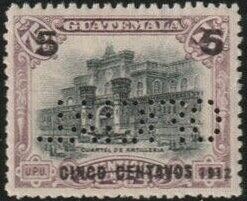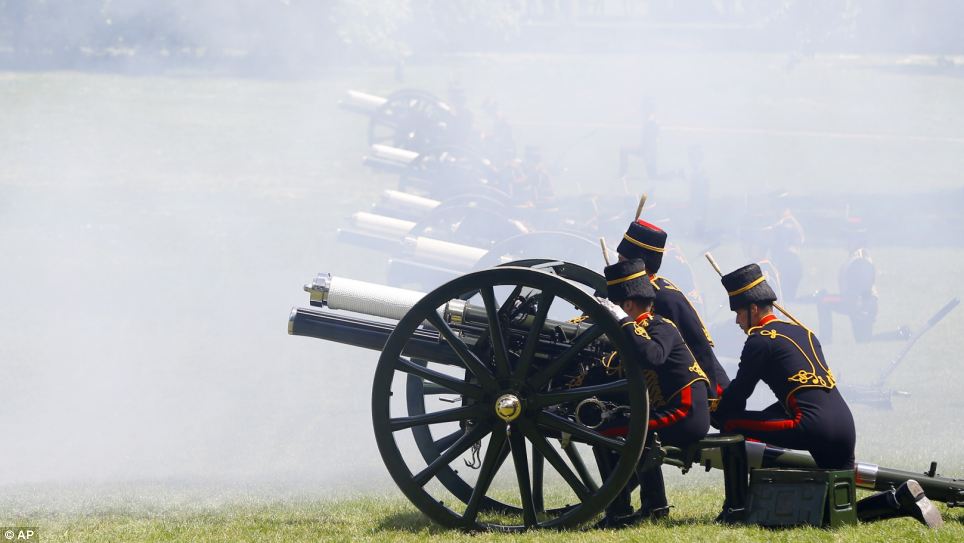Stamp: Artillery barracks - 5c on 75c (Guatemala 1912)
Artillery barracks - 5c on 75c (Guatemala 1912)
01 September (Guatemala ) within release Official - 1912 perf issue goes into circulation Stamp Artillery barracks - 5c on 75c face value 5 Guatemalan centavo
| Stamp Artillery barracks - 5c on 75c in catalogues | |
|---|---|
| Colnect codes: | Col: GT O1912-06 |
Stamp is horizontal format.
Definitive stamp perforated "OFICIAL" for use on external mail sent from government offices in Guatemala City. The perfin was applied to stamps requisitioned from available stocks, so the issue date given here is approximate. The perfin may exist upright, inverted, reversed and reversed inverted. This stamp was footnoted by Sn in 2009 but not in 2021, although the latter edition mentions that any 1912-1926 Guatemala stamps may exist with this perfin. Forged perfins may exist.Also in the issue Official - 1912 perf issue:
- Stamp - Artillery barracks - 5c on 75c face value 5;
- Stamp - Cathedral of Guatemala City - 1c on 20c face value 1;
- Stamp - Colón Theater, Guatemala City - 2c on 50c face value 2;
Stamp Artillery barracks - 5c on 75c it reflects the thematic directions:
Architecture (Latin architectura, from the Greek ἀρχιτέκτων arkhitekton "architect", from ἀρχι- "chief" and τέκτων "builder") is both the process and the product of planning, designing, and constructing buildings and other physical structures. Architectural works, in the material form of buildings, are often perceived as cultural symbols and as works of art. Historical civilizations are often identified with their surviving architectural achievements.
Artillery are ranged weapons that launch munitions far beyond the range and power of infantry firearms. Early artillery development focused on the ability to breach defensive walls and fortifications during sieges, and led to heavy, fairly immobile siege engines. As technology improved, lighter, more mobile field artillery cannons developed for battlefield use. This development continues today; modern self-propelled artillery vehicles are highly mobile weapons of great versatility generally providing the largest share of an army's total firepower.
A building or edifice is a structure with a roof and walls standing more or less permanently in one place, such as a house or factory. Buildings come in a variety of sizes, shapes and functions, and have been adapted throughout history for a wide number of factors, from building materials available, to weather conditions, to land prices, ground conditions, specific uses and aesthetic reasons. Buildings serve several needs of society – primarily as shelter from weather, security, living space, privacy, to store belongings, and to comfortably live and work. A building as a shelter represents a physical division of the human habitat (a place of comfort and safety) and the outside (a place that at times may be harsh and harmful).



